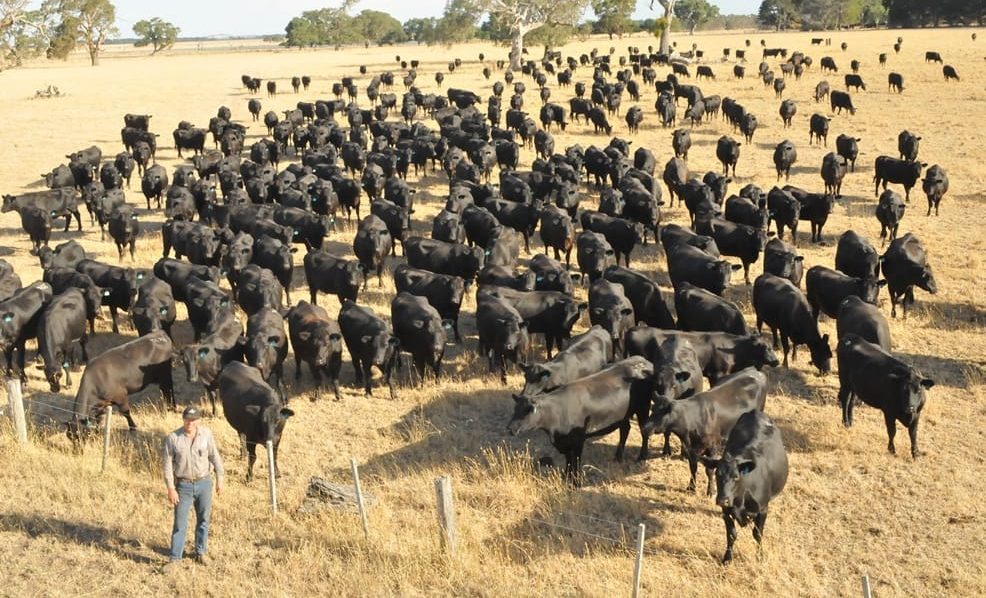What happened to global oil prices this week? What does it mean for Australia’s petrol prices?

- by Admin
- October 4, 2024
Petrol prices have been falling in Australia.
But the extreme escalation in the conflict in the Middle East this week has increased geopolitical tensions and sent oil prices higher.
Where are oil and petrol prices heading?
Petrol prices had been falling in Australia
Six months ago, the price of automotive fuel hit record highs in Australia.
According to the Bureau of Statistics, the daily average price of unleaded petrol (98 octane) hit 218.78 cents per litre in April, and the quarterly average price hit 196.95 cents per litre in the June quarter.
But since then, petrol prices have been falling.
Motorists have seen some independent petrol stations selling fuel for less than 150 cents per litre recently.
See the graphic below from the Australian Institute of Petroleum.
It shows the last few months’ decline in the average retail price of unleaded petrol (green line) and the wholesale price (the grey line) in Australia.
The wholesale price is based on the Singapore benchmark price of petrol (MOGAS95 Petrol) — the key price benchmark for petrol in Australia — plus shipping costs and Australian taxes (43c per litre fuel excise, and 10 per cent GST).
Those declines in local petrol prices have matched the declines in global oil prices.
Source: Australian Institute of Petroleum, Australian market snapshot
What happened to oil prices this week?
But since Monday this week, Brent crude oil futures have jumped from $US71.77 a barrel to $US77.53 a barrel — an 8 per cent increase.
See the graphic below.
It shows the sharp rise in Brent crude oil futures in the bottom right-hand corner of the graph.
Analysts say the conflict in the Middle East is largely to blame.
Source: LSEG Data & Analytics
On Thursday, Jason Turvey, the deputy chief emerging markets economist at Capital Economics, explained what was happening.
“The latest ratcheting up in tensions began after an Israeli air strike in the south of Beirut on Friday targeted and killed Hassan Nasrallah, the leader of the Shia militia Hezbollah,” Mr Turvey wrote in a note.
“Iran retaliated to Nasrallah’s death, as well as that of Hamas leader Ismail Haniyeh in July, by launching around 180 missiles (including ballistic projectiles) at Israel [on Tuesday].
“Attention is now focused on Israel and the scale and nature of its response to Iran’s retaliatory attack,” he said.
On Friday morning, ANZ researchers Brian Martin and Daniel Hynes sent their own note.
“Crude oil prices rallied as fears grew that Israel would target Iranian oil facilities in retaliation for Iran’s recent missile attack,” they wrote.
“US President Biden said that [he] was discussing that option with Israel, but he didn’t expect any response to come in the next 24 hours.
“Brent crude rose more than 5 per cent on the news as markets start to price in the likelihood of supply disruptions in the Middle East.
“The region accounts for about a third of global supply,” they warned.
What does it mean for Australia’s petrol prices?
Analysts say we will have to see what happens in coming weeks and months.
Iran’s attack on Israel this week was its largest ever. In the aftermath of that attack, the US website Axios reported that Israel was planning a “significant retaliation” within days that could target oil production facilities inside Iran and other strategic sites.
According to Reuters on Friday, when ministers from Gulf Arab states and Iran met in Qatar this week, they tried to reassure Iran that they were remaining neutral in its conflict with Israel.
It said they were prioritising de-escalation.
“Iran has not threatened to attack Gulf oil facilities but it has warned that if “Israel supporters” intervene directly their interests in the region would be targeted,” Reuters reported.
“Saudi Arabia has been wary of an Iranian strike on its oil facilities since a 2019 attack on its key refinery at Abqaiq briefly shut down more than 5 per cent of global oil supply. Iran denied involvement,” it said.
Saul Kavonic, MST Marquee senior energy analyst, told the ABC’s The Business this week that global traders had experienced some geopolitical “risk fatigue” in the past two years because lots of potential risks to oil supplies never eventuated.
But things may be different this time around, he said.
“Now that we’re seeing more direct conflict between Israel and Iran, this changes the equation,” Mr Kavonic said.
“If you start to look at what potential targets could be in an Israeli attack over coming days and weeks, it includes for example Kharg Island, which is where 90 per cent of Iranian oil is exported from.
“If we start to see a disruption there, we are talking about 2 per cent of global supply coming off the market — that could send oil to $100 a barrel or above,” he warned.
He said there was an even greater risk than that, too.
Loading…
“If we get a much [bigger] conflagration here, then we could see the Strait of Hormuz impacted, about 20 per cent of the world’s oil and LNG pass through this strait,” Mr Kavonic said.
“If that were impacted, we’re talking about an impact on oil markets which is three times the size of the shocks we saw in the 1970s in the wake of the Iranian Revolution, we are now talking about $US150, $US200 a barrel oil, even higher LNG prices.
“Now we’re talking about massive energy security events around the world which will impact us here in Australia and everywhere around the globe,” he said.
It depends on how other oil-producing nations behave
But Jason Turvey from Capital Economics said there was another potential scenario worth thinking about, that was more optimistic.
He said if Iran’s oil supplies did end up being disrupted, other oil-producing nations would have the ability to fill the void.
“There are reasons to believe that any spike in prices could quickly unwind,” Mr Turvey wrote.
“For one thing, an attempt by Iran to block the Strait of Hormuz would prompt the US and its allies to step in and clear the waterway.
“And even if Iranian oil infrastructure is damaged, we suspect that OPEC, led by Saudi Arabia and the United Arab Emirates (UAE), would step in to offset any loss of oil supply.
“The latter has been itching to raise oil output for some time and it now seems that Riyadh is coming round to a similar way of thinking as Abu Dhabi.
“In an interview with the Wall Street Journal this week, Saudi Energy Minister Prince Abdulaziz bin Salman seemed frustrated with OPEC+ members that are not complying with their quotas,” he wrote.
Mr Turvey said Saudi Arabia and the UAE, combined, had spare production capacity of about 4.5 million barrels per day (BPD), which was more than Iran’s total crude output of 3.3 million BPD.
“Of course, oil supply from these countries would be vulnerable to any disruption to the Strait of Hormuz,” he wrote.
“But even then, both countries have built pipelines to divert some supply away from the Strait.
“In the medium-term, then, we would argue that risks to oil prices are skewed to the downside [his italics],” he wrote.
The Latest News
-
December 21, 2024‘Dream come true’: Emotional Test bolter on shock call-up and classy act from man he replaced
-
December 21, 2024‘Got this wrong’: Former skipper criticises selectors’ call
-
December 21, 2024The Kings horse Gilded Water wins at Randwick races
-
December 21, 2024Nick Kyrgios has chance to become first player ‘to do it all’, says tennis great in big statement about Aussie
-
December 21, 2024Australia retains Rose Bowl after rain-affected victory





